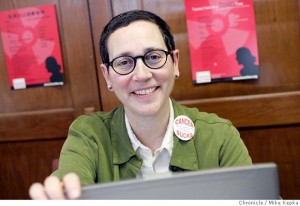1 | 2 | 3 | 4 | 5 | 6
Chemoprevention Is No Magic Bullet
by Gayle Sulik, Psychology Today, June 27, 2013.
New guidelines for chemoprevention are hailed as “historic” and a “game changer.” Certainly, the promise to reduce the risk of getting breast cancer by 40 to 50 percent sounds great, but if the actual (absolute) numbers are far less impressive – less than 2 percent— and these drugs promote blood clots, cancers, cataracts, and other harms, maybe it’s important to read the fine print and ask some tough questions before getting too excited.
Life-Saving Drugs, Lethal Prices
by Gayle Sulik, Psychology Today, May 31, 2013.
More than 90 percent of the anticancer agents approved by the FDA from 2005 to 2009 cost more than $20,000 for a 12-week course of treatment. With skyrocketing prices, the oncology drug industry has grown substantially from under $5 billion in 1998 to $19 billion in 2008 to $80 billion in 2012. Market researchers forecast that by 2018 the industry will reach over $100 billion. Huge profit margins and returns on investment attract pharmaceutical investors. But at what cost to patients?
Why Jolie’s Cancer Test Costs So Much
by Gayle Sulik, CNN, May 24, 2013.
(CNN) — Angelina Jolie, when writing about her preventive double mastectomy, did not discuss how much her surgeries cost, but she did mention that many women would not be able to afford the $3,000 to $4,000 test that led her to make the decision. What she failed to say was why the test costs so much. The reason is this: In 1998 Myriad Genetics patented two genes: BRCA1 and BRCA2. With its exclusive rights, Myriad developed a test for mutations in those genes trademarked “BRACAnalysis.” Because it essentially owns the genes, Myriad is the only company that can conduct the test, so it sets the price.
Angelina Jolie and the One Percent
by Gayle Sulik, Scientific American, May 20, 2013. (Picked up by Yahoo).
After learning that she had inherited a mutation on one of the so-called breast cancer genes, actress Angelina Jolie decided to have a double mastectomy to reduce her risk of developing breast cancer. She also plans to have her ovaries removed to reduce her risk of ovarian cancer. Jolie explained her medical decision in an op-ed in The New York Times, saying that she decided to be proactive and to minimize the risk as much [she] could. Since the Angelina Jolie story broke, there’s been a flurry of discussion. But we should remember an important caveat about Angelina Jolie’s situation. Namely, that it doesn’t apply to most women.
 Barbara Brenner and the Road Less Pink
Barbara Brenner and the Road Less Pink
by Gayle Sulik, Ms. Magazine Blog, May 20, 2013.
I met Barbara Brenner in a book. In a collection of scholarly essays, she wrote the final substantive chapter, about women creating a breast cancer movement. I had just begun my own investigation of breast cancer culture, industry and advocacy. I re-read Barbara’s words many times. Today, as I gaze beyond the post-it notes, tabs and highlights that cover the book, I see how insightful and prophetic her words were.
The Mammography Debate: To Screen or Not to Screen?
by Gayle Sulik, ShareCare, May 20, 2013.
In a much-tweeted cover story for the New York Times Magazine, Peggy Orenstein recently wrote that she once believed a mammogram saved her life. Sixteen years later, after dealing with breast cancer round two, she says she now wonders whether that first mammogram mattered at all. “Would the outcome have been the same,” she writes in Our Feel-Good War on Breast Cancer, “had I bumped into the cancer on my own years later? Researchers have asked this same question for many years now.
